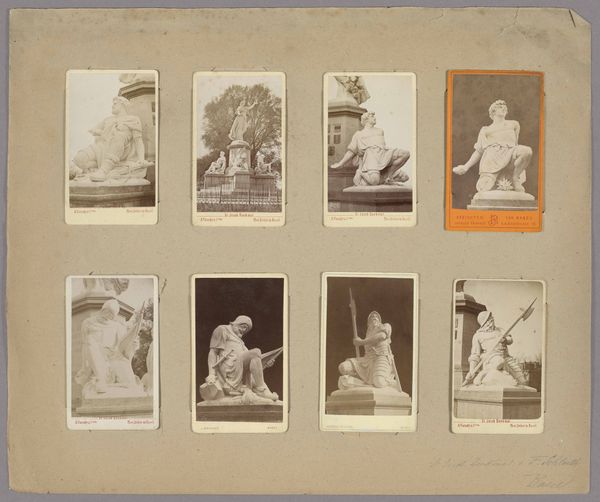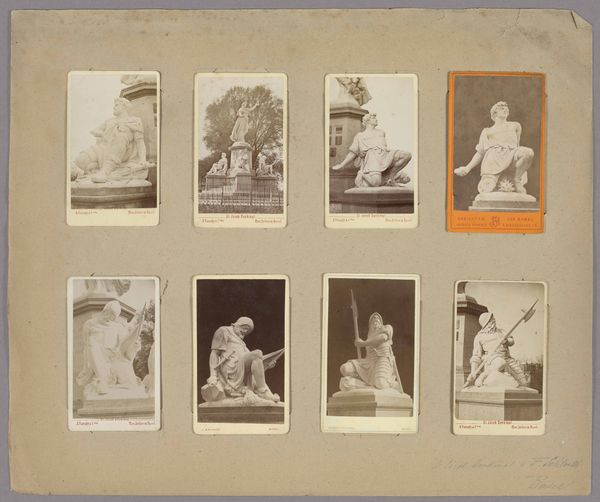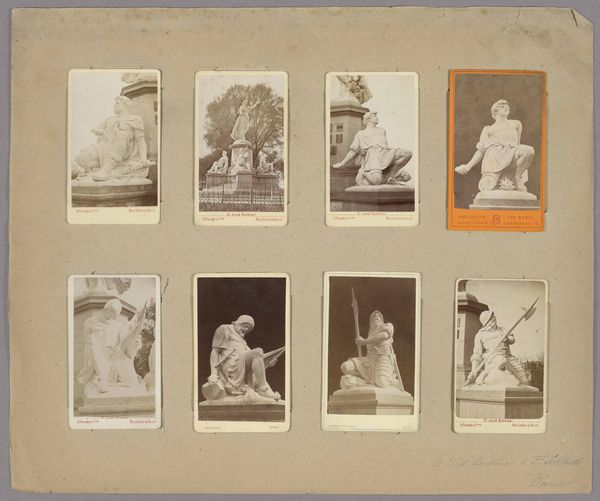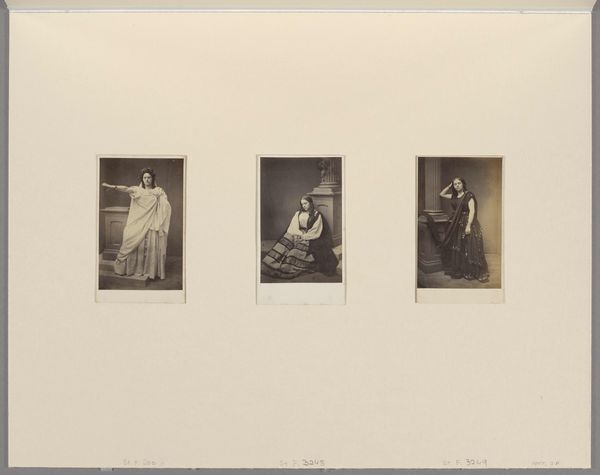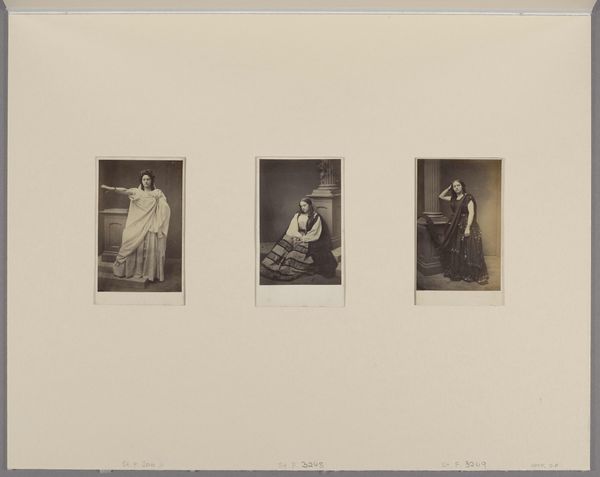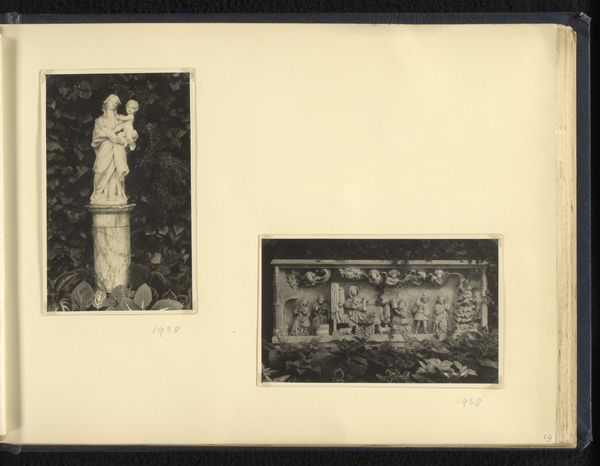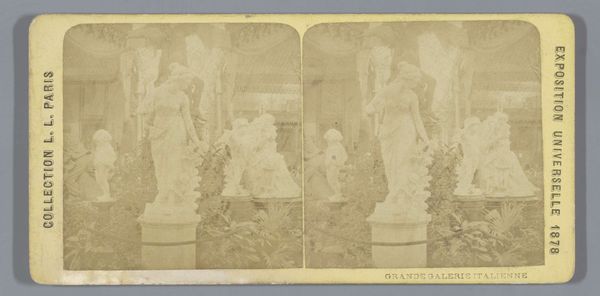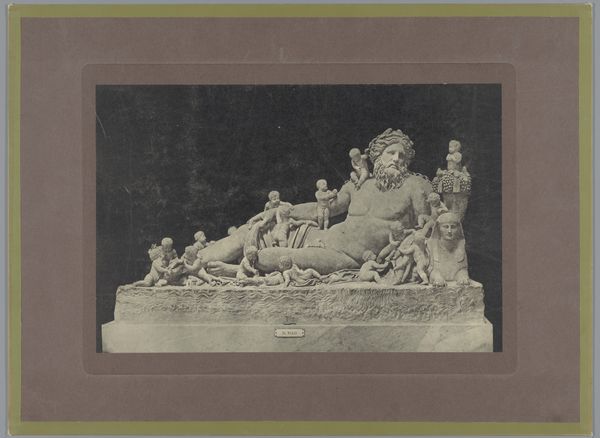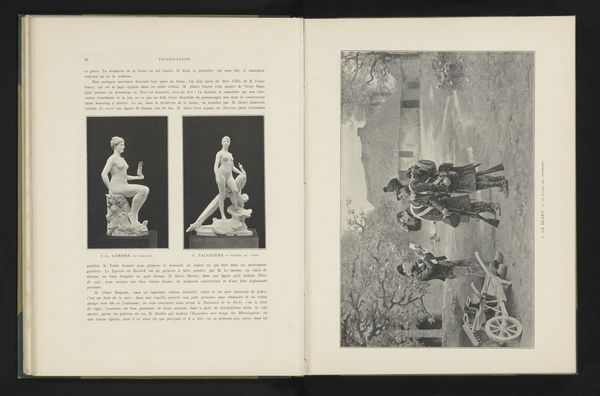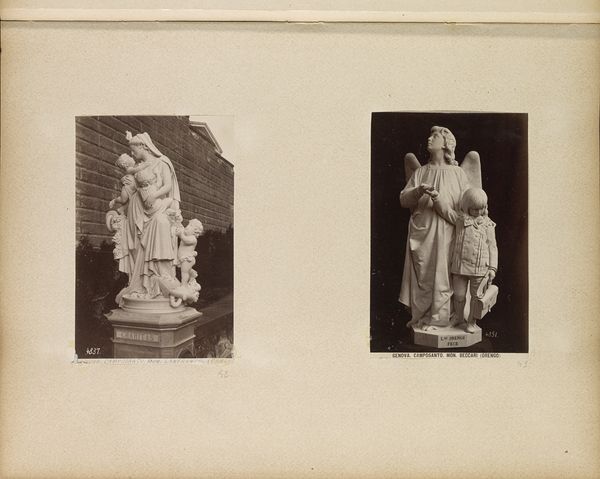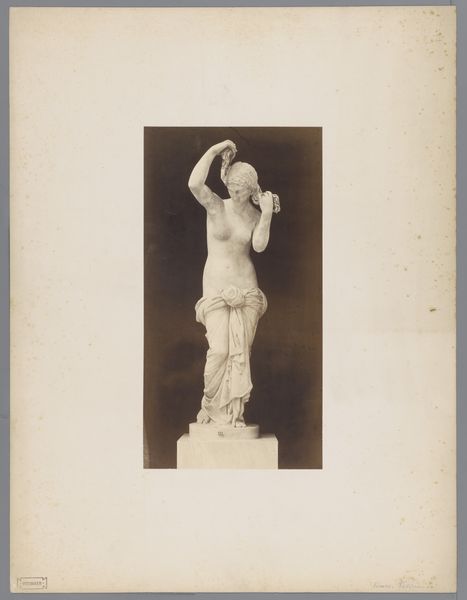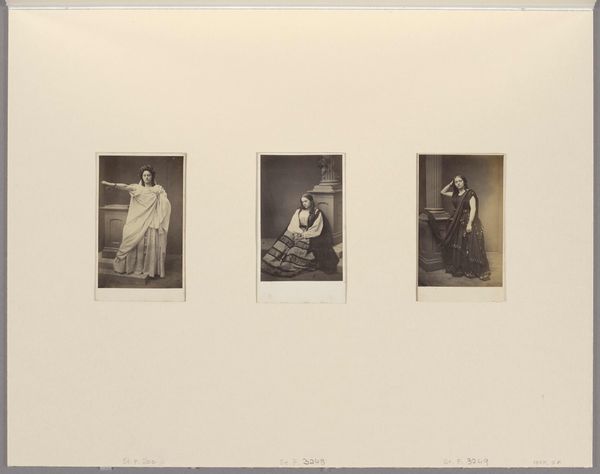
albumen-print, print, paper, photography, sculpture, albumen-print
#
albumen-print
#
portrait
# print
#
landscape
#
paper
#
photography
#
sculpture
#
watercolour illustration
#
albumen-print
Copyright: Public Domain
Editor: This is "Basel St. Jacob memorial, crossbowman," a photographic albumen print by A. Varady & Comp, dating back to around 1890. What strikes me most is the overall muted tone, and how the grid-like composition almost turns these commemorative statues into a catalog of stoic poses. What do you make of it? Curator: Oh, I feel a powerful whisper of time here, don't you? The albumen print process, the subject matter, even the grid format—it’s like looking through a faded window into the late 19th century, when national identity was being sculpted in stone and then meticulously documented. This wasn't just about remembering a battle; it was about crafting a specific kind of heroism. Doesn’t it almost feel… manufactured? Editor: Manufactured, yes, precisely! Each image, perfectly framed, devoid of true grit. Is that a critique, though, or a reflection of the period's aesthetic? Curator: Perhaps both. These memorial statues themselves were curated portrayals of the past. And then, this photographic "album" further filters that reality through the lens of, well, another lens! Consider the careful arrangements within each shot. Do you see how each one seems meticulously posed, striving for a dignified, almost theatrical, representation of grief and patriotism? What would you call that, staged melancholy? Editor: "Staged melancholy"—I love that. So it's about the layers of representation then – the statues, the photographs, even the very act of creating an album. Each reinforces a very particular… narrative. It does make you wonder what gets left out, doesn't it? Curator: Absolutely! It prompts us to consider whose stories are being told, and from what perspective. What do we actually *see* when we look at historical artifacts and photographs? That it’s never quite the ‘whole’ truth, isn't it? Editor: Never the whole truth. That's something I'll definitely carry with me. Thanks!
Comments
No comments
Be the first to comment and join the conversation on the ultimate creative platform.
